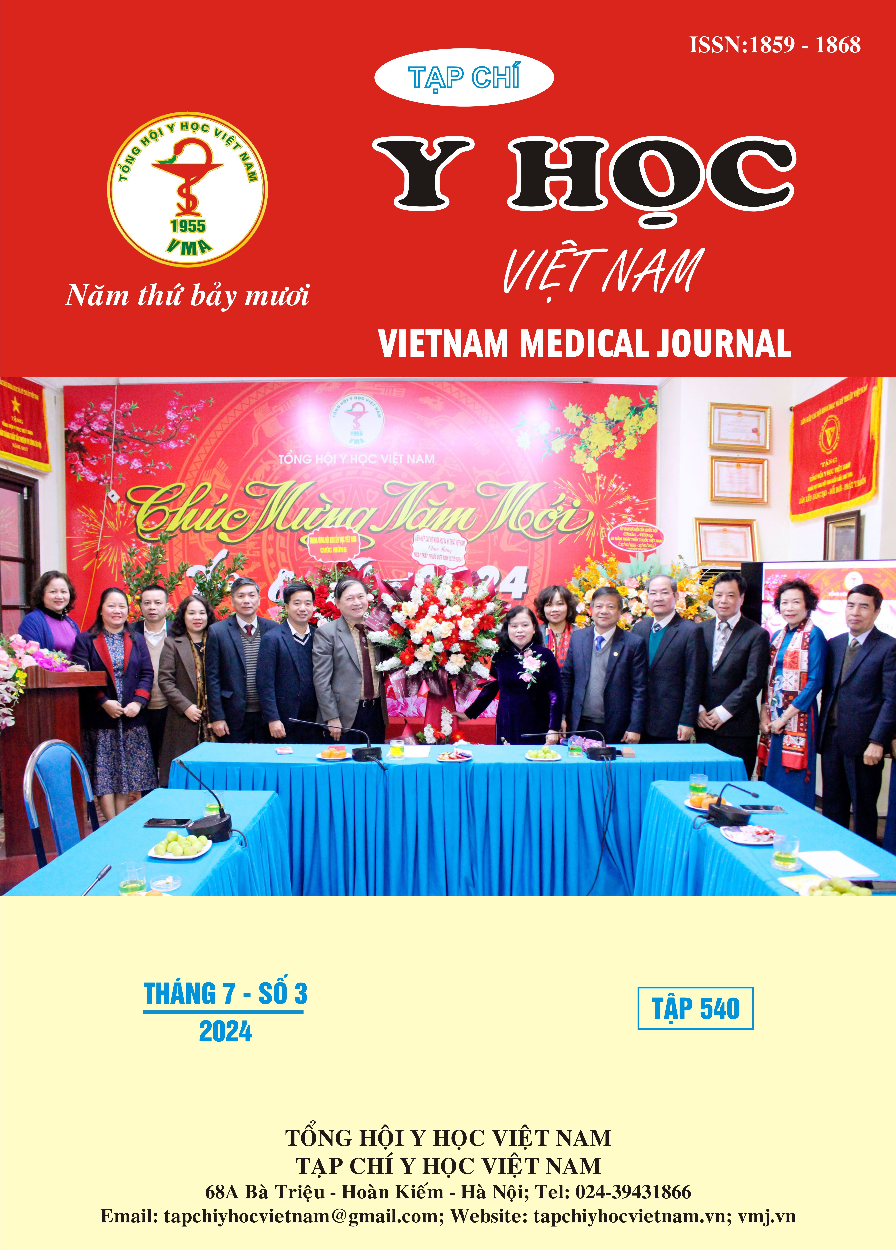INFLUENCE OF CYP3A5 GENE POLYMORPHISM ON TACROLIMUS PHARMACOKINETICS IN PATIENTS IN THE FIRST YEAR AFTER KIDNEY TRANSPLANTATION AT 103 MILITARY HOSPITAL
Main Article Content
Abstract
Objective: To evaluate the impact of CYP3A5 gene polymorphisms on the pharmacokinetics of tacrolimus in the first year after kidney transplantation. Subjects and methods: Retrospective study combined with prospective longitudinal follow-up, surveying 95 kidney transplant patients at Military Hospital 103 from March 2020 to March 2023, collecting information on tacrolimus dosage, CYP3A5 gene polymorphism test, tacrolimus trough concentration quantification. Result: Patients with the CYP3A5*1/*1 and CYP3A5*1/*3 genotypes received a higher mean dose of tacrolimus than patients with the CYP3A5*3/*3 genotype. Mean tacrolimus trough concentrations in renal transplant patients with CYP3A5*1/*1 and CYP3A5*1/*3 genotypes were lower than in patients with the CYP3A5*3/*3 genotype. The mean tacrolimus concentration/dose (C/D) ratio for patients with CYP3A5*1/*1, CYP3A5*1/*3 genotypes was lower than CYP3A5*3/*3. Conclusion: CYP3A5 gene polymorphisms strongly influence tacrolimus dose. Patients expressing CYP3A5 required a higher median tacrolimus dose than nonexpressing patients (CYP3A5*3/*3), while median tacrolimus concentrations and concentration-to-dose (C/D) ratios were lower in five patients. first after kidney transplant.
Article Details
Keywords
CYP3A5 genetic polymorphisms, Kidney transplant, tacrolimus.
References
2. Zaltzman Alina SR, Glick Lauren A, Zaltzman Jeffrey S, et al. (2016). The role of CYP3A5 polymorphism and dose adjustments following conversion of twice-daily to once-daily tacrolimus in renal transplant recipients. Transplantation research, 5(1): 1-6.
3. Turolo Stefano, Tirelli Amedea S, Ferraresso Mariano, et al. (2010). Frequencies and roles of CYP3A5, CYP3A4 and ABCB1 single nucleotide polymorphisms in Italian teenagers after kidney transplantation62(6): 1159-1169.
4. Sukkha Sayamon, Chindavijak Busba, Montakantikul Preecha, et al. (2017). Trough level from twice daily to once daily tacrolimus in early conversion kidney transplant recipients: a prospective study39: 1298-1303.
5. Luo Xi, Zhu Li-jun, Cai Ning-fang, et al. (2016). Prediction of tacrolimus metabolism and dosage requirements based on CYP3A4 phenotype and CYP3A5* 3 genotype in Chinese renal transplant recipients37(4): 555-560.
6. Kostalova Barbora, Mala-Ladova Katerina, Sulkova Sylvie Dusilova, et al. (2022). Comparison of different methods to assess tacrolimus concentration intra-patient variability as potential marker of medication non-adherence13: 973564.
7. Rodriguez‐Antona Cristina, Savieo Jessica L, Lauschke Volker M, et al. (2022). PharmVar GeneFocus: CYP3A5112(6): 1159-1171.
8. Li Liang, Li Chuan-Jiang, Zheng Lei, et al. (2011). Tacrolimus dosing in Chinese renal transplant recipients: a population-based pharmacogenetics study67: 787-795.
9. Kim In‐Wha, Noh Hyejin, Ji Eunhee, et al. (2012). Identification of factors affecting tacrolimus level and 5‐Year clinical outcome in kidney transplant patients111(4): 217-223.
10. Srinivas Lekshmy, Gracious Noble, Nair Radhakrishnan R %J Frontiers in Pharmacology (2021). Pharmacogenetics based dose prediction model for initial tacrolimus dosing in renal transplant recipients12: 726784.


